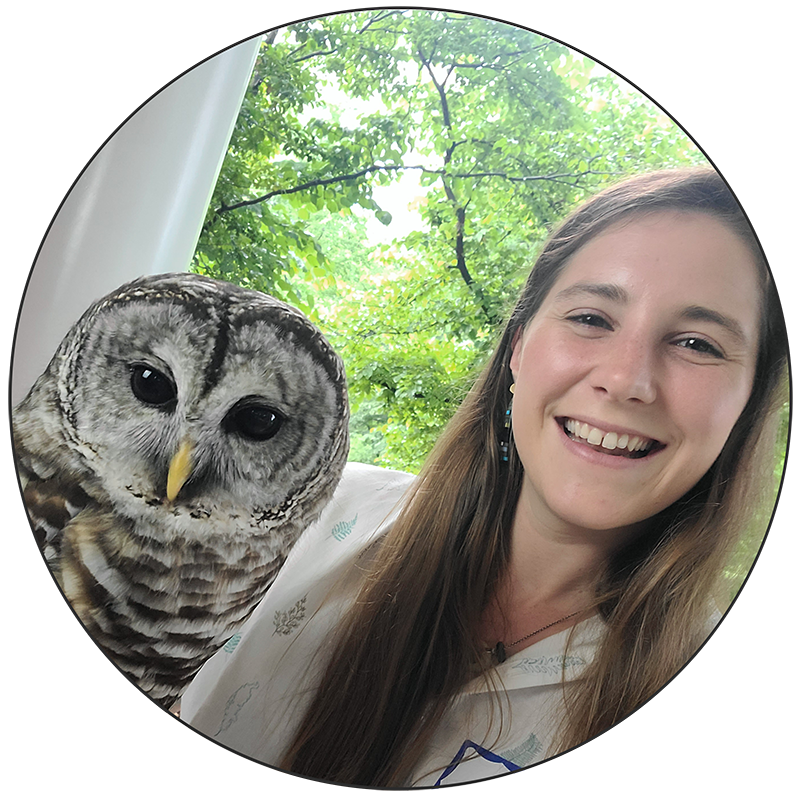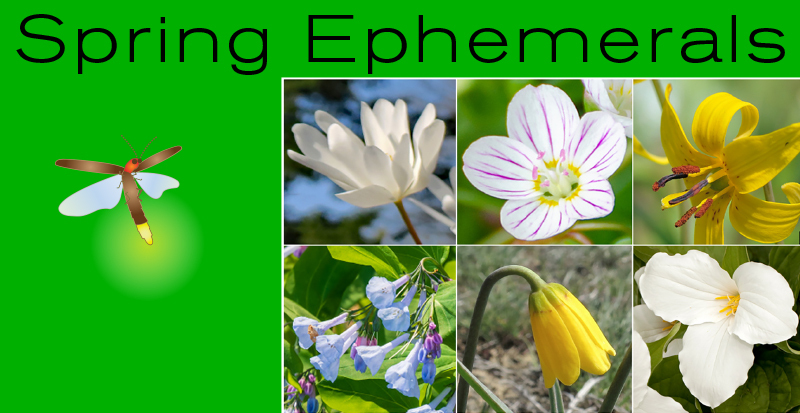April showers bring May flowers… unless we decapitate them all with our lawnmowers.
By Grace Hassler and Grant Jensen
Est. Read Time: 5 minutes
We’ve heard from quite a few people who have said that No Mow May was their entrance into thinking about their yard as a habitat. That’s why we want to give it a shoutout!
No Mow May isn’t as cut and dry (ha) as the name suggests. Also known as Low Mow May, No Mow April, or Low Mow Spring, the basic premise is fairly straightforward - in a display of solidarity with our pollinator pals, homeowners refrain from mowing their lawns for the first few weeks after the grass begins to grow in the spring. Ideally, this allows the flowering plants in the lawns to bloom and provide an early and much-needed food source for insects waking up from winter. Foraging resources are often scarce in early spring, so saving any available blooms for pollinators is important.
In reality, refraining from mowing for a few weeks only offers short-lived benefits to our native insects and pollinators. Perhaps more importantly, it can start a conversation that extends well beyond the month of May and help people rethink the societal norm of a perfectly manicured grass lawn.
No Mow May is easy, unintimidating, and a promising first step for many people starting their journey toward a more biodiverse yard. If you do participate, consider using No Mow May as an educational tool to engage your community and introduce them to Homegrown National Park™ and the concept of using our yards to create habitat.
Other Ways To Support Biodiversity
If you’re looking for more ways to help increase biodiversity around your home after No Mow May is over, here are some additional actions that can help pollinators year-round.
Shrink your lawn and incorporate more native plants
You won’t have to mow as much if there is less lawn to mow! Dr. Doug Tallamy, co-founder of Homegrown National Park, suggests shrinking your lawn by identifying the places in your yard where it is useful to have turf and converting the rest of the lawn to native landscaping. Prioritize planting Keystone species, the most productive plants that support the most species. Use HNP’s Keystone Guides for container-friendly flower plants or trees & shrubs to determine the Keystones for your area.
Remove invasives
Invasive species take over landscapes, outcompete native plants for limited space and resources, and rarely provide the same caliber of food and habitat as native plants. To add insult to injury, many invasive species are popular for home landscaping. Try to identify any invasive plants in your yard (apps like iNaturalist can help) and remove or replace them.
Soft landings
More than 90% of the caterpillars that develop on trees drop to the ground for part of their lifecycle. Consider replacing lawn under trees with well-planted beds of groundcovers appropriate for your area. This will give the caterpillars a nice, soft landing they can easily dig into.
Don’t cut your stems
Many pollinator species nest and overwinter in plant stems. Leave the old stalks where they are to provide quality habitat for beneficial insects.
Grow a native bee lawn
Bee lawns are turfgrass lawns enriched with low-growing flowering species. They provide foraging opportunities for pollinators while still allowing for moderate recreational use, and require less frequent mowing than traditional turf lawns. Learn more about native bee lawns.
Advocate for more biodiversity-friendly ordinances
Unfortunately, your ability to participate in No Mow May might be curtailed by local ordinances and HOA requirements for lawn maintenance. If your HOA or local government has strict rules on lawn care, advocate for guidelines that allow for landscaping that supports native pollinators.
Additional resources about No Mow May and beyond:
https://beecityusa.org/no-mow-may/
https://hort.extension.wisc.edu/articles/whats-the-deal-with-no-mow-may/

Grace Hassler recently graduated from the University of Pennsylvania with a Master of Environmental Studies degree focusing on local land conservation. She loves storytelling and finding ways to connect the public with important environmental research in a way that is interesting and understandable. In her free time, you can find Grace outside participating in one of her many hobbies – whitewater kayaking, birding, mountain biking, photography, rock climbing – you name it!




No-mow May last year allowed me to discover that a little of my “grass” was actually Blue-eyed grass, which is a beautiful tiny iris and a native to my area. That’s the good news. The bad result of no-mow May was that at least two invasives got a headstart and multiplied by 100 – Asiatic False Hawksbeard and Hairy Bittercress, the horrible seed-spewers, and they started shooting off their missile seeds before the end of MARCH! This year I had to mow, bag, and trash to prevent further proliferation. No-mow May has a double edge. Be careful. I noticed that my neighbor’s lawn was invaded by the hairy bittercress, the area nearest to mine. OOOOOOPS!